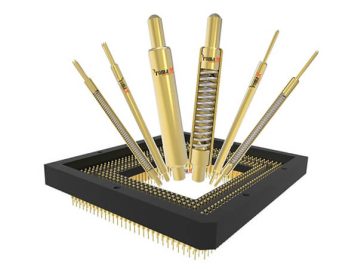Every surveillance system and CCTV needs hundreds of components for efficient functioning. Some small connectors give a seamless performance, while others make up a huge part of the cameras. Whether your connector is large or small, it is mighty in performance. One of these great connectors is the BNC connector. In this blog, we will discuss BNC connectors, their types, how BNC connectors perform, their assembly, their uses, and more.
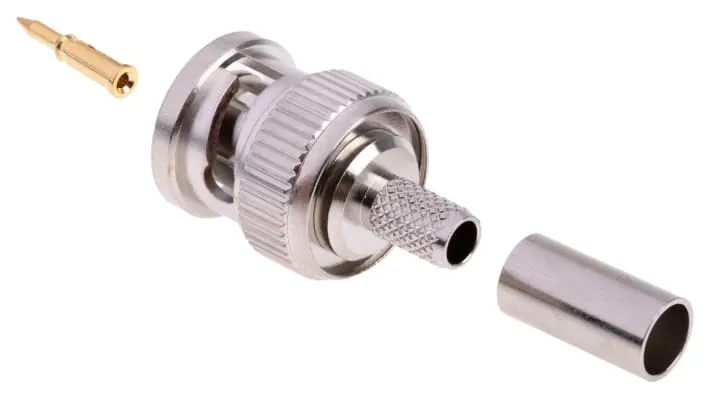
BNC Connector
BNC connector is a reliable RF connector that works with the integration of BNC cables. BNC is Bayonet Neill Concelman to make all the connections and disconnections strong. Such connectors are helpful in surveillance systems, military equipment, aviation electronics, and amateur radio antennas. In addition, these connectors make the synchronization of various components convenient.
How do BNC connectors perform?
As you know, standard connectors facilitate carrying current through mechanical connections for both low-frequency AC and DC circuits. However, radio frequency needs a secure connection that generates standing waves and reflection by minimizing impedance. For this purpose, coaxial cables are used as they can maintain impedance. That’s why we also use BNC connectors to carry radio waves. Due to their constant and equivalent impedance to coaxial cables, BNC connectors are found suitable for RF applications.
Carry out RF signals with BNC connectors without fear of losses and reflections. Being made type connectors, every end of the BNC connector is connected with a conducting wire. The operating performance of the BNC connector is very simple. Every BNC male connector has a rotating ring tube locked with any female connector for a secure connection. Moreover, this locking mechanism reduces accidental disconnects even when cables are pulled. You can achieve this secure working connection by any of the following mechanisms:
-
Twist and Snap
Twist and Snap designs are useful for indicating a proper connection because of their audible ‘snap’. In addition, having an interactive design of interlocking slots and studs makes mating spontaneous.
-
Thread Nut Coupling
If you use a threaded form of BNC connector, the Thread Nut Coupling is suitable for you. This locking mechanism works with screw threads rather than slots and locks pins to secure connections.
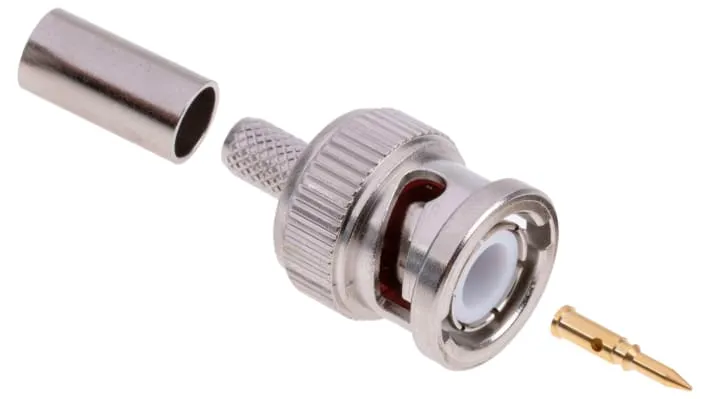
Assembly of BNC Connectors
BNC connectors come with flexibility in design and assembly. This flexibility is also a huge reason for the popularity of these connectors. Depending upon the applications, BNC connectors can be arranged in the following assemblies:
-
BNC Compression Connector
BNC compression connector is an assembly that is easy to connect with a compression tool and cable stripper. This single-piece F connector is reliable and suitable for coaxial radio frequency connections. Such connectors are used in cable modems and satellite television.
-
BNC Crimp On Connector
It’s a widely used assembly of BNC connectors. BNC crimp on the pack is available in 2 pieces and three-piece styles. It’s up to you which style you want to choose for a secure connection of BNC crimp-on connector with coaxial cable. Use a compression tool and cable stripper to make this arrangement durable and efficient.
-
BNC Twist-On Connector
You don’t need tools to connect a BNC connector in a Twist-On assembly. All you need is a cable over which twisting of the connector is possible.
-
BNC Inserter/ Remover
A Bnc inserter or remover is a lightweight stainless steel tool used to insert or remove BNC connectors with torque. The main purpose of this tool is to make connections and disconnections quick and secure. You can even access hard-to-reach high-density areas of BNC connectors without any risk of damage.
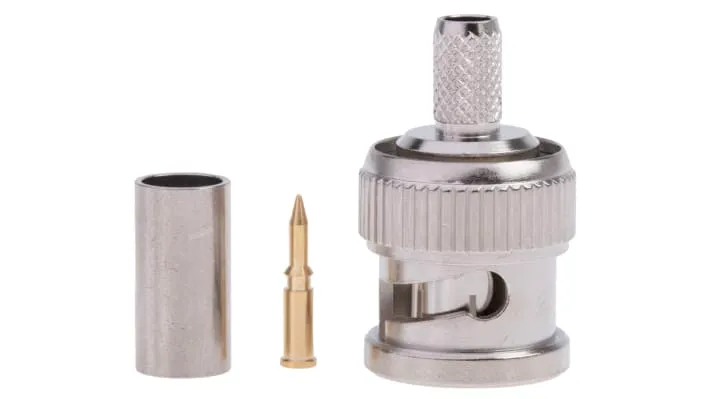
How many types of BNC connectors are present today?
Various BNC connectors work on bayonet-type connections. These connectors are multipurpose regardless of which bayonet connector is useful in military or aviation. Following are some of the key types of BNC connectors having wide applications in present life:
-
Twinax
Twinax is a connector that uses one female and one male contact point. Due to two independent contact points, this connector is also known as the twin BNC connector. It makes connections of 75 ohms and 95 ohms feasible. Twinax connectors have working efficiency in low voltage and frequency ranges. The average voltage and frequency of twin BNC connectors are 100 volts and 100 MHz. Boost integrity and polarisation of the system without mixing the signals through this Twinax connector. It’s perfect for all computing systems.
-
Triaxial connectors
Triaxial connectors can carry out signals to the ground conductors. Another specialty of Triax connectors is their longevity and reliability. Such connectors are useful in places with minimum noise radiation and maximum RF shielding, like sensitive electronic measurement systems. Prevent accidental mating of connectors with the use of this three-lug arrangement.
-
Miniature Connectors
Miniature connectors are considered the smallest versions of BNC connectors. It includes high-density BNC and mini BNC. This high-density equipment can retain and secure all electric connections despite small footprints on circuit boards. In addition, the 75-ohm impedance makes miniature connectors perfect for HD videos.
-
SR Connectors
SR connectors are highly advanced BNC connectors that are used for coaxial cables. Due to its wide applications, it is also known as the CP connector. However, there is a visible difference in the dimensions of connectors for making metric conversions beneficial.
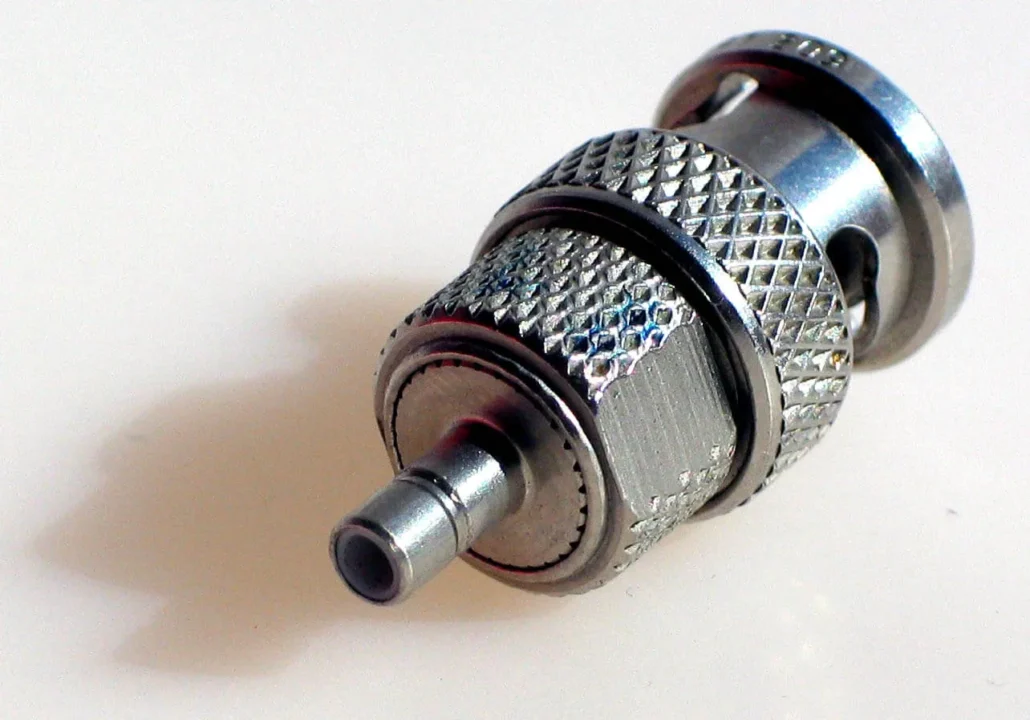
Advantages of BNC Connector
Various features make use of the BNC connector beneficial over all other cables and connections. Let’s explore some of the potential benefits that make BNC connections durable and worthy:
Simple Design
Due to the simplest design of these cables, their connections are convenient. As a result, it’s easy to use connectors with simpler interfaces than complex ones.
-
Easy Connections
Another potential advantage of using coax cable connectors is easy connections. You don’t have any need for tools and heavy equipment to make connections secure.
-
Less Disconnection Risk
When you use BNC connectors, all cable connections are locked. This robust lock system protects you from accidents due to limited disconnection risks. However, these disconnection risks occur in a greater proportion in other connections, even with a minor vibration.
Applicants of BNC Connector
The applications of BNC connectors are available in all fields. Some common uses of BNC connectors are linked with radio frequency and video functioning. It is also useful in aerospace electronics, nuclear instrumentation, radio antennas, testing equipment, and digital and analog interface signals.
Moreover, it is also found as a great alternative to RCA connectors. Just like RCA connectors, BNC connectors can also carry signals of composite videos on commercial devices. Moreover, some consumer electronics have RCA jacks that also use a BNC connector with the help of an adapter to make connections smooth.
Besides this, recording studios also use these connectors to synchronize recording and transmission in digital devices through the clock timing signals.
Concluding Remarks!
By looking at the immense importance and wide applications of BNC connectors, you will also be thinking of making connections of your CCTV surveillance systems secure. Whenever you build durable connections of computing technology, CCTV, or radio, ensure to integrate any of the reliable BNC connectors in these systems. Enjoy long-term benefits by using a suitable BNC connector version to increase the working efficiency of systems.
 Over 15 Years of Expertise
Over 15 Years of Expertise FREE samples provided to ensure product satisfaction
FREE samples provided to ensure product satisfaction Rapid Turnaround: Mass Production Complete in 15 - 20 Days
Rapid Turnaround: Mass Production Complete in 15 - 20 Days





